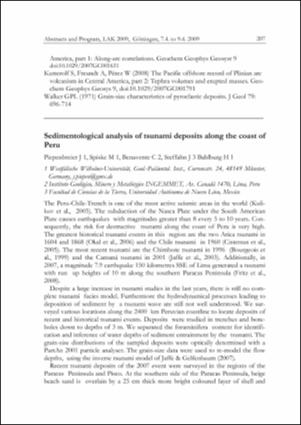Please use this identifier to cite or link to this item:
https://hdl.handle.net/20.500.12544/1923Files in This Item:
| File | Description | Size | Format | |
|---|---|---|---|---|
| Piepenbreier-Sedimentological_analysis_of_tsunami.pdf | Artículo de congreso | 125.8 kB | Adobe PDF | View/Open |
This item is licensed under a Creative Commons License












